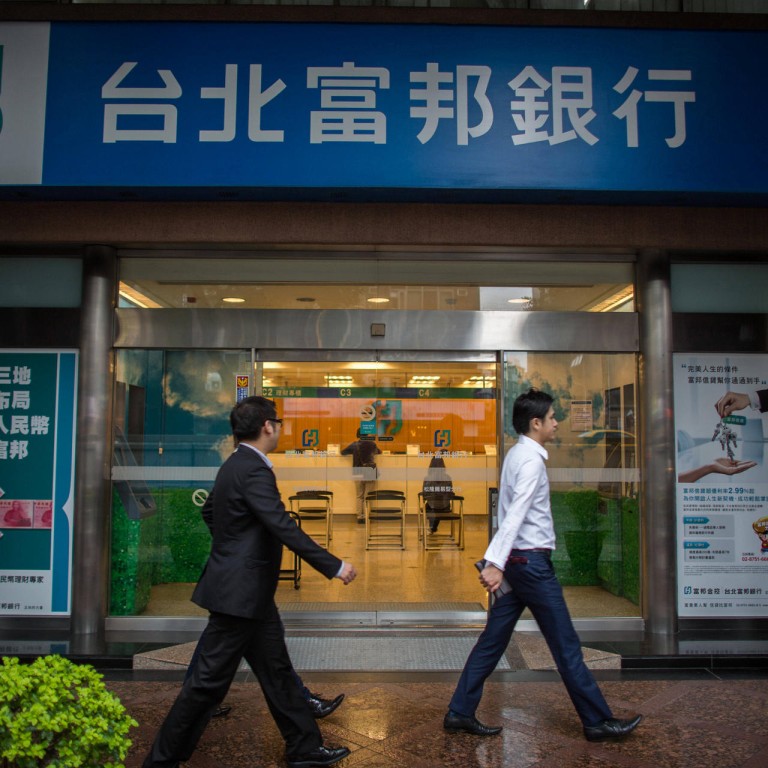
Taiwan banks to double exposure to mainland over next few years
Island's lenders to boost lending over the next two years despite increased default risks
Taiwanese banks will double their mainland exposure over the next two years after lending to the mainland climbed an annual 135 per cent between 2010 and last year, according to a report released by Fitch Ratings yesterday.

Taiwanese banks' exposure to the mainland hit 7 per cent or US$90 billion at the end of last year. Fitch expects the figure to top 13 per cent by 2016. Several large banks, including Mega International Commercial Bank and Bank SinoPac, have already increased their exposure to more than 10 per cent.
Risk was concentrated at the biggest banks such as Mega, SinoPac, Shanghai Commercial and Savings Bank and Taipei Fubon Bank, many of which had little experience lending offshore, Fitch said.
"Most Taiwanese banks have no proven track record of sustaining profitable offshore operations," the report said. "China exposure will increasingly become a downside rating factor for Taiwanese banks should their exposures grow excessively without generating strong profit."
The largest percentage, about 44 per cent, of lending to the mainland, has gone to Taiwanese businesses operating there.
Regulatory easing on both sides of the strait, which started four years ago, has boosted Taiwan's exposure.
In 2010, Taiwanese regulators increased the cap on the amount that banks on the island were allowed to lend to Taiwanese corporations on the mainland from 30 per cent to 50 per cent of a bank's offshore net assets. Taiwanese bank branches were allowed on the mainland that year.
The banks began lending directly to mainland corporations in September 2011 and started placing yuan deposits with the Bank of China's Taipei branch early last year, a development hailed as a breakthrough in cross-strait financial relations.
About 40 per cent of Taiwan's exposure is short-term placements and deposits at mainland banks.
"A lot of the increase came from the opening of the [yuan] centre last year," said Jerry Yang, a bank analyst at Daiwa Capital Markets. "Although there has been some pickup [in exposure], I think it's manageable so far."
Demand for loans from Taiwan surged in the middle of last year when liquidity on the mainland tightened, but lending has slowed this year.
Risks for Taiwan in lending to private mainland firms were highlighted in May when China Lumena New Materials asked lenders to postpone repayments on an US$85 million, one-year offshore loan. Several Taiwanese banks had syndicated exposure of about US$100 million to it.
